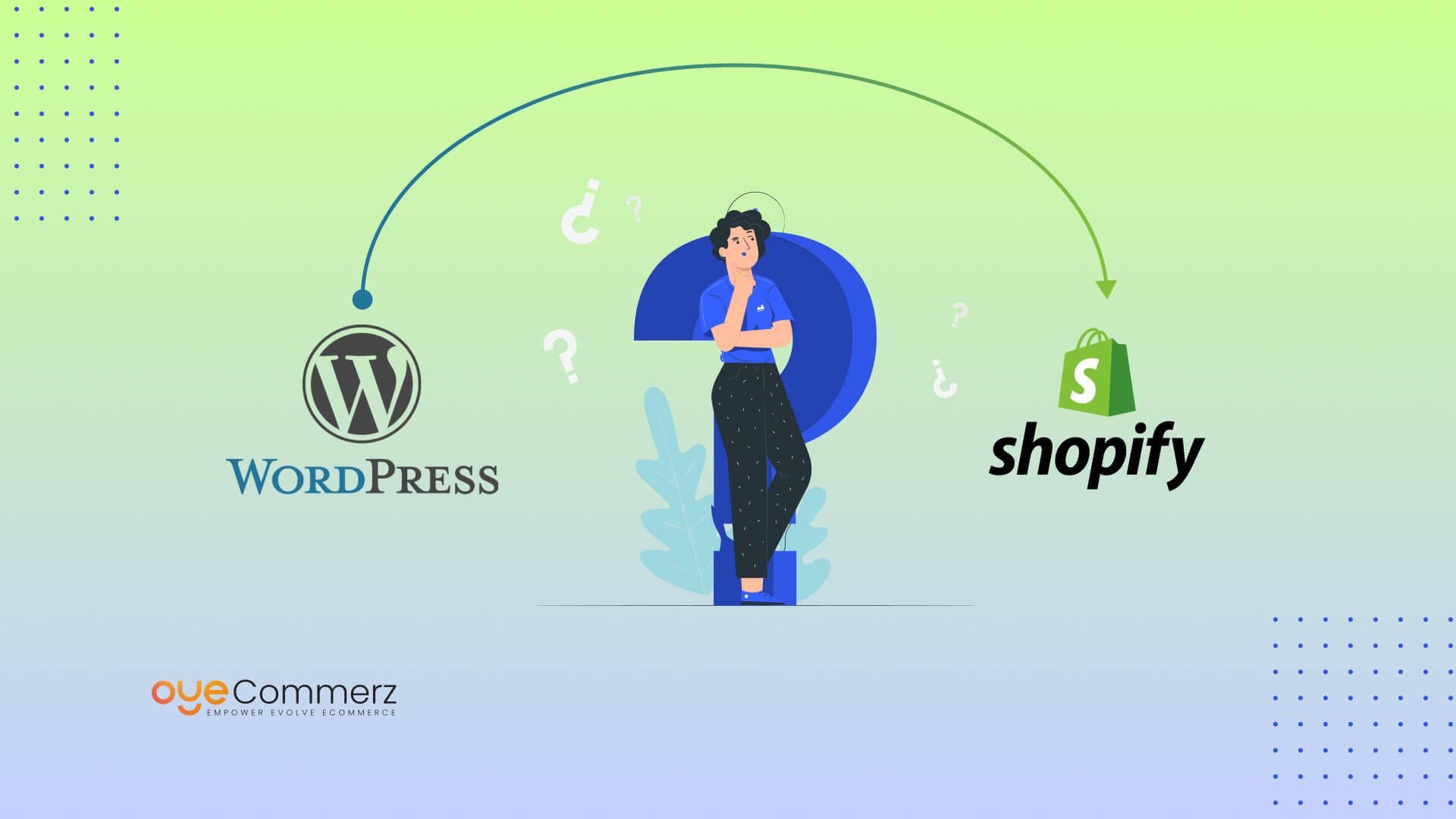Transitioning from WordPress to Shopify is an exciting step in optimizing your e-commerce operations. As businesses expand, choosing a platform that aligns with growth potential, UX, and customization is essential. Shopify has emerged as a favorite for online merchants, offering superior adaptability, data protection, and user-friendliness. In this guide, we’ll explore the transformative impact of this migration, highlight the advantages, and share practical tips to facilitate a seamless move.
1. Why Migrate from WP to Shopify?
WordPress, paired with WooCommerce, has served countless e-commerce platforms. However, as businesses expand, challenges like plugin dependency, data risks, and technical complexities often obstruct growth. Shopify, designed explicitly for digital retail, eliminates these concerns with an comprehensive, intuitive solution. Real data back this shift—Shopify hosts over 4.4 million websites globally, with a documented 10% boost to sales performance for numerous merchants after migration.
2. Shopify's Perks for Thriving Online Stores
Shopify’s robust ecosystem caters for expanding businesses. Its standout benefits include:
- Seamless Customization: Shopify offers over 80 expertly crafted themes.
- Built-in Features: Features like Shopify Payments and built-in SEO save time and effort.
- Global Reach: Multi-currency support and localization features empower businesses to expand internationally.
Additionally, Shopify boasts an uptime rate of 99.98%, ensuring your website remains accessible.
3. Getting Ready for Your WordPress-to-Shopify Transition
Prior to starting the migration process, evaluate your current store. Analyze product data, customer details, and SEO performance. Tools like Shopify’s Migration Kit or third-party solutions help ease the transition. Develop a comprehensive plan, ensuring all resources—item details, media files, and articles—are optimized for transfer.
4. Data Migration: A Critical Step
Data migration forms the foundation for a successful platform switch. When migrating from WP to Shopify, prioritize:
- Product Information: SKU, descriptions, and groupings.
- Customer Data: Emails, purchase records, and preferences.
- Search Engine Considerations: Retain meta tags, URLs, and forwarding paths to maintain search rankings.
Use apps like LitExtension to streamline data transfer while reducing mistakes.
5. Tailoring Your Shopify Store to Fit Your Brand
After the move, customizing your Shopify store helps it aligns with your business identity. Utilize Shopify’s intuitive page builder to create layouts with ease. Shopify's themes are optimized for all devices, providing a smooth UX across devices—a key point, given 74% E-commerce platform solutions of online shopping comes from mobile visitors.
6. How to Protect Your SEO Rankings When Switching Platforms
Search engine optimization is crucial for preserving your online presence during migration. Shopify excels in SEO with Shopify API integration organized link formatting, built-in optimization tools, and seamless blog integration. Ensure:
- Set up URL forwarding for old URLs.
- Optimize new pages with targeted phrases.
- Leverage plugins like Plug in SEO to monitor performance after the switch.
7. Essential Tests After Migrating to Shopify
Once the migration is complete, run detailed checks.
Check: - Page load times (Shopify boasts faster speeds in contrast with WP).
- Functionality of payment gateways and checkout processes.
- Adaptability across devices.
Testing guarantees your store delivers a seamless shopping journey from day one.
8. Real-Life Success Story
One such migration success story is Gymshark, a fitness apparel brand that transitioned to Shopify. After the switch, the company saw a 60% boost in mobile sales and significantly lowered site downtime. This highlights the capabilities of Shopify in enhancing online business success.
9. Overcoming Common Migration Issues
Migration is not without obstacles, such as information accuracy and adjusting tailored features. However, Shopify’s extensive assistance and external professionals simplify the process. Collaborating with qualified Shopify developers helps guarantee a trouble-free transition.
10. Making the Switch: The First Step Toward Success
Migrating from WordPress to Shopify marks a forward-thinking decision to e-commerce. By focusing on growth, streamlining operations, and improving buyer satisfaction, Shopify enables companies to thrive in challenging industries.
Final Thoughts
Switching from WordPress to Shopify offers a smart solution that can significantly boost your e-commerce success. With a well-structured strategy, the appropriate resources, and expert support, you can achieve new growth opportunities.
Excited to start the journey? Reach out today to learn how our Shopify migration services can transform your online store. Contact us now, or ask yourself: Can your business afford to miss out on Shopify’s growth potential?
